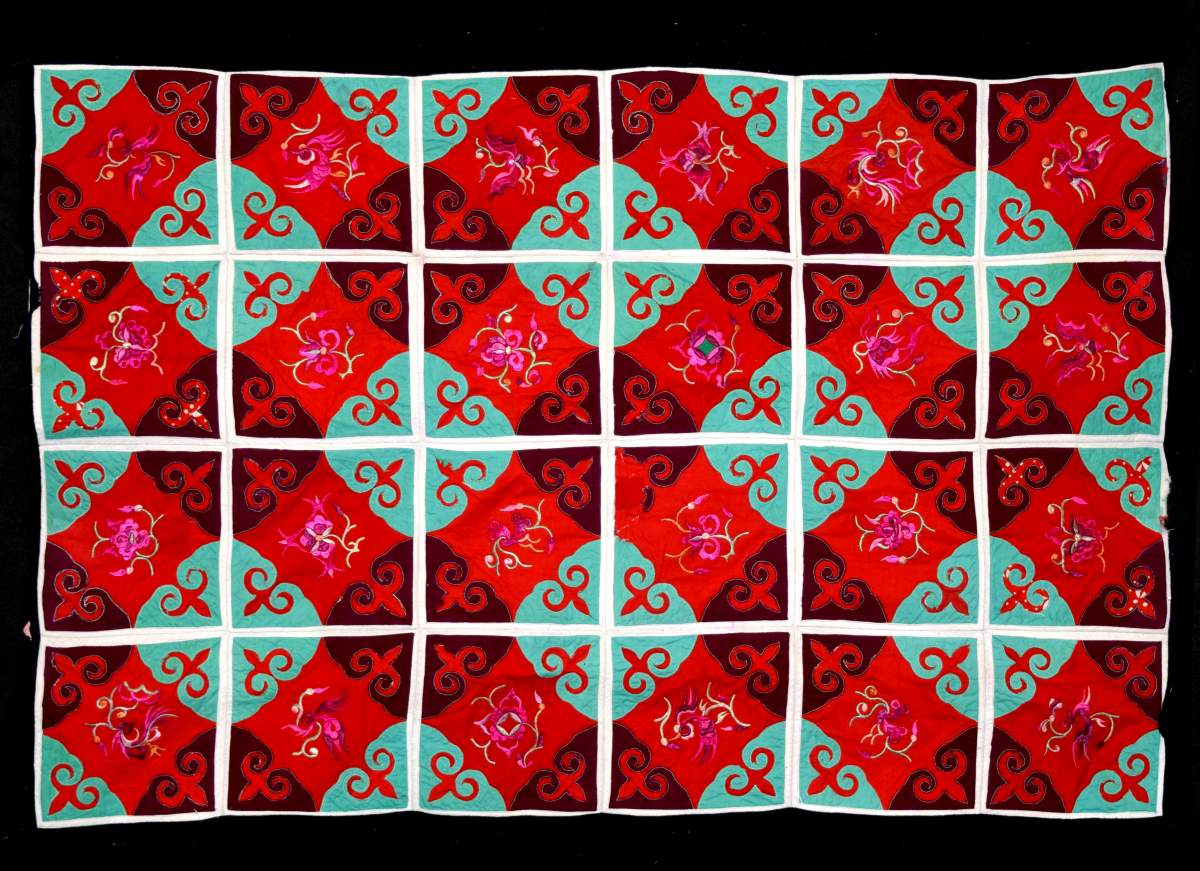
An exhibition at the Mathers Museum of World Cultures, called Quilts of Southwest China, explores how traditional Chinese quilts reveal the diverse, complex heritage of China's many ethnic groups. These handmade quilts, once essential to everyday life, have taken on new meaning as valued art forms in the Southwestern provinces.
"One thing that I hope that the exhibition does and I think it's well positioned to do is to give people a sense of the cultural complexity, the cultural diversity, that is found in the country of China," says Jason Jackson, the director of the Mathers Museum of World Cultures and a professor at Indiana University. Jackson helped coordinate the exhibition, which was a production of six museums in total: three in China and three in the United States.
"It's a product of a collaboration that's been ongoing since 2013. We've traveled to China many times now for research that's led to the exhibition, and we're really excited to present it to Bloomington audiences," Jackson says.
One of the co-curators of the exhibition is Lijun Zhang, a research curator at the Guangxi Museum of Nationalities in Guangxi, China. She also holds a Ph.D. in Folklore from Indiana University. Zhang explains why the exhibit focuses on the Southwest region of China in particular.
"Southwest China is the most ethnically diverse and culturally rich region in the country," Zhang explains. "In the past, many people in this region made their own textiles, such as bedcovers and clothes, especially among the ethnic minorities, who live in remote areas with poor transportation."
This region has many different ethnic groups, Zhang says, each with a distinctive style of textile art in their clothing and quilts, which visitors can view in the exhibition. Compared to American quilts, the Chinese quilts tend to feature more appliqué surface treatments and traditional imagery from the various Chinese ethnic groups. Another difference is that while quilts have been recognized as an art form in the United States for decades now, Chinese quilts are still transitioning from an everyday practicality to a celebrated art form in Southwest China. Zhang explains that some people still make quilts by hand from start to finish in Southwest China.
"Southwest China has a long tradition of handmade textiles. People learn textile making, including the making of quilts, informally within the group. One of the quilt artists featured in the quilt exhibition said she learned quilting from the elders in her village," Zhang says.
These practices are becoming less and less common, though, and as traditional quilt making skills diminish in Southwest China due to cheaper, mass-produced alternatives, the craft simultaneously garners more respect as part of the region's cultural heritage, Jackson says.
"What we find in China is that fewer people are making them, but those who are making them are often doing it with a higher level of intentionality," he says.
This transformation of a craft from ubiquitous and practical to rare and decorative has occurred in the United States as well, Jackson says. As industrialization made pottery and woodcarving unnecessary for everyday life, these crafts gained new value as objects of American heritage. The elevation of these crafts to artwork is due in part to the preservation efforts by museums and artists, Jackson says. Exhibitions of these crafts provide an important insight into the culture of the region, and remind viewers of how China's past continues to shape the present in complex and diverse ways, Jackson says.
Not only does this exhibition show people in the United States that quilts of China are works of art, but it also shows local artists in the Southwestern provinces of China that their traditional crafts have a meaningful place in Chinese heritage.
"While visitors enjoy the beauty and sophistication of the art, and appreciate the cultural diversity expressed in the exhibition, we also hope this exhibition helps visitors become aware of some of the ethnic groups in Southwest China in the context of both the traditional and changing landscapes," Zhang says.






